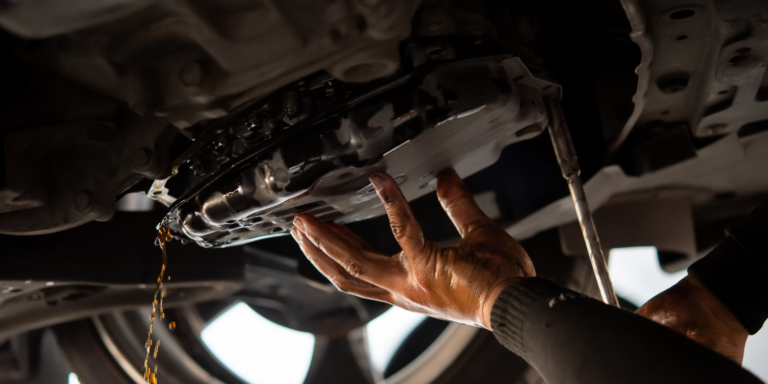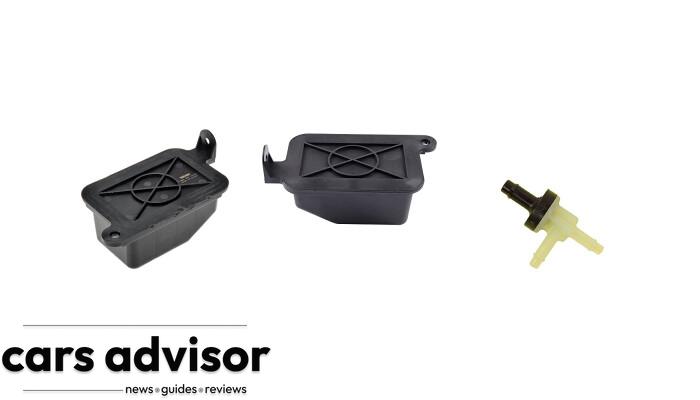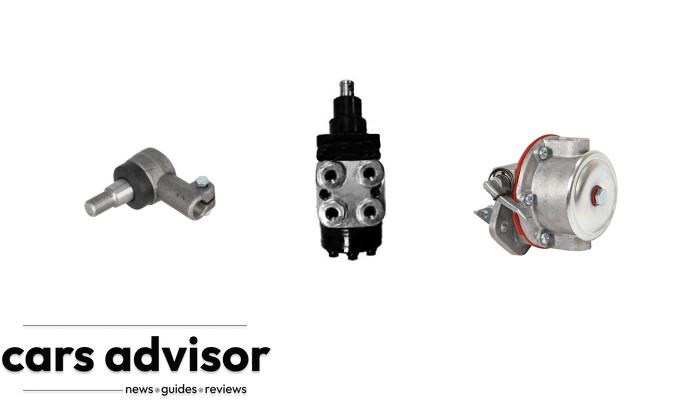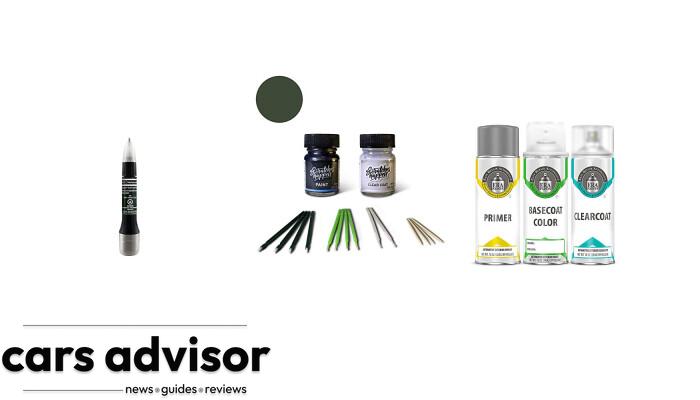Experiencing a clutch master cylinder not pumping fluid can be frustrating and concerning. This critical component is essential to your vehicle’s functionality, ensuring smooth gear shifting and proper operation of the hydraulic system.
In this blog post, we will delve into what the clutch master cylinder is, common reasons for its failure to pump fluid, and troubleshooting tips to get you back on the road quickly.
By understanding these underlying issues and following preventative maintenance measures, you’ll be better equipped to handle any potential challenges with your clutch system.
Understanding The Clutch Master Cylinder
The clutch master cylinder is a vital component of the hydraulic system that transfers the driver’s clutch pedal input into pressure applied to the clutch mechanism.
Components And Function
As a crucial part of your vehicle’s clutch system, the master cylinder converts mechanical force into hydraulic pressure.
Essentially, when you press down on the clutch pedal, it activates the master cylinder, which then pumps fluid through the hydraulic system to operate the slave cylinder and disengage the clutch.
To better understand its role, let’s break down the key components of a typical clutch master cylinder.
First, the reservoir contains brake fluid or specific clutch fluid (depending on your vehicle), serving as an essential supply source for efficient function.
The piston within the master cylinder moves along with the push rod connected to the pedal when you apply pressure to it.
As this happens, hydraulic pressure increases within a sealed chamber filled with fluid – pushing it towards slave cylinders and engaging or disengaging various parts of your vehicle’s transmission system.
Common Causes Of Failure
I have seen a lot of clutch master cylinders fail during my experience, and here are some common causes of failure:
- Worn-Out Seals: As the clutch master cylinder ages, its seals deteriorate, causing fluid leaks. This eventually leads to a loss of pressure, preventing the necessary force from being generated to engage the clutch.
- Contamination: Dirt and debris can build up in the system due to worn-out components, moisture intrusion, or even just exposure to air. This contamination can cause blockages in the hydraulic lines and even cause damage to internal components such as pistons and springs.
- Overheating: The high temperatures that result when a driver “rides” the clutch pedal can cause overheating in the clutch master cylinder. Overheating can lead to seal damage or even total system failure.
- Air in the System: If air gets into your clutch system, it can prevent proper operation since it compresses more than liquid. Bleeding a system is generally necessary after repairing or replacing parts on any vehicle’s hydraulic system.
By keeping these causes of failure in mind, you can avoid issues with your clutch master cylinder before they become critical problems.
Types Of Clutch Master Cylinders
There are two clutch master cylinders: the pushrod style and the pull type. Pushrod-style master cylinders use a rod that pushes on the clutch mechanism, while pull-type cylinders use a cable to pull on the mechanism.

Pushrod-style master cylinders are more common in older cars and some newer models. In contrast, pull-type master cylinders are typically found in performance vehicles or those with heavy-duty clutches.
Regardless of the type of clutch master cylinder you have, regular maintenance is crucial for its longevity and optimal performance.
Signs Of A Clutch Master Cylinder Not Pumping Fluid
If you are experiencing difficulty shifting gears, a soft or spongy clutch pedal, the clutch pedal sticking to the floor, or leaking fluid in your hydraulic system, these may be signs of a problem with your clutch master cylinder.
Difficulty Shifting Gears
One of the most common signs of a clutch master cylinder problem is difficulty shifting gears. When the clutch pedal is pressed, it should disengage the clutch mechanism and allow for smooth gear changes.

However, if there’s an issue with the master cylinder, it may not be able to maintain enough pressure in the hydraulic system to engage or disengage the clutch properly.
This can make changing gears feel stiff or grinding, especially when shifting into first gear from a stop. Additionally, if there’s air trapped in the hydraulic system due to leaks or insufficient fluid levels, this can also cause issues with shifting smoothly between gears.
Spongy Or Soft Clutch Pedal
I have often experienced spongy or soft clutch pedals in my years of driving. This occurs when the pedal is pushed down but feels loose and lacks resistance.
It can indicate a problem with the clutch master cylinder and other clutch system components.
A malfunctioning clutch master cylinder can also result in a spongy or soft pedal.
If the master cylinder generates insufficient pressure, it will not fully engage the clutch mechanism, causing an incomplete shift or difficulty getting into gear.
Clutch Pedal Sticking To The Floor
One of the most alarming signs of a clutch master cylinder problem is when the pedal sticks to the floor. This can happen if there is not enough pressure in the hydraulic system or air has entered the line.
Sometimes, it may be due to a malfunctioning master cylinder that cannot generate enough force to move the fluid through the system.
If you notice your clutch pedal sticking to the floor, you should stop driving immediately and investigate further. Check for leaks in your reservoir or low brake fluid levels in your hydraulic system.
Also, bleeding your clutch system may help remove trapped air and restore proper function.
Leaking Fluid
A leaking clutch master cylinder is one of the most common reasons your vehicle’s clutch may not engage properly. If there is a leak in the hydraulic system, it can cause fluid loss and prevent the clutch from operating correctly.
It’s essential to check for any leaks around the master cylinder and slave cylinder regularly.
Neglecting a leaking clutch master cylinder can lead to other significant problems, such as rusted components, decreased performance, or even total failure of your vehicle’s hydraulic system.
Once you’ve noticed leakage coming from your vehicle’s hydraulic system, it’s best to have it inspected by a professional mechanic to identify what needs repairing or replacing before the damage gets worse.
Troubleshooting A Clutch Master Cylinder Not Pumping Fluid
To fix a clutch master cylinder that isn’t pumping fluid, check the fluid level, inspect for leaks, clean the hydraulic system, bleed the clutch system, or replace the entire component; read on to learn more about each step and how to prevent such issues from happening again.
Check The Fluid Level
The first thing you should do when troubleshooting a clutch master cylinder, not pumping fluid, is to check the fluid level in the reservoir. This easy and quick process can tell you a lot about what’s going on with your vehicle.
You’ll need to locate the clutch master cylinder, typically on the driver’s side of the dash or firewall.
Once you’ve found it, unscrew the cap to access the reservoir and check for sufficient brake fluid inside.
If it’s low, top up as needed using a funnel – filling it past maximum might cause overfilling of hydraulic fluids leading to further issues.
keep in mind that overfilling can also prevent a new clutch master cylinder from working properly too! Low levels of brake fluids may indicate leakage or loss of pressure in either one or both cylinders; therefore, fast action needs to be taken before causing more damage internally.
Inspect For Leaks
When inspecting for leaks in the clutch master cylinder, it is essential to examine the hydraulic system components carefully. Look for any signs of fluid leakage on the driver’s side of the dash where the clutch mechanism is located.
Another way to check for leaks is by topping up the fluid level in the reservoir and monitoring it closely over a few days. If there is a drastic drop in fluid levels, then it may indicate a leak that needs immediate attention.
In conclusion, regular inspection of your vehicle’s hydraulic system can prevent significant damage caused by leaking fluids.
Bleed The Clutch System
To fix a clutch master cylinder not pumping fluid, one possible solution is to bleed the clutch system.
Here are the steps to follow:
- Locate the bleeder valve on the slave cylinder. It’s usually located on the driver’s side of the transmission or clutch housing.
- Place a drain pan under the bleeder valve to catch any fluid that may occur during the bleeding process.
- Attach a clear plastic hose onto the bleeder valve and place the other end into a container filled with clean brake fluid.
- Have an assistant press and hold down on the clutch pedal while you loosen the bleeder valve. The pressure will force air, debris, or old fluid out of the hydraulic system through the tube and into the container.
- Tighten back up the bleeder valve before releasing pressure from the pedal slowly so that it pumps back up again
Repeat this process for as long as required until no more bubbles or debris come out of the hose and only clear brake fluid is visible in the hose.
This method can remove air or blockages within your hydraulic system, preventing the proper flow of clutch fluid between the reservoir and master cylinder, causing pumping issues in clutch pedals.
Replace The Clutch Master Cylinder
If all other troubleshooting steps have been completed, and the clutch master cylinder is still not pumping fluid correctly, it may be necessary to replace the entire part.
It’s essential to purchase a high-quality clutch master cylinder compatible with your vehicle’s make and model.
The replacement process requires some technical expertise but can be done at home with the right tools if you are confident working on cars. Drain any remaining fluid from the hydraulic system before removing the old clutch master cylinder.
Replacing a faulty clutch master cylinder can restore the proper function of your car’s transmission and help prevent further damage caused by improper shifting or stalling.
Prevention And Maintenance Tips
To prevent clutch master cylinder issues, inspecting the clutch system regularly and changing the fluid as required; using high-quality clutch parts and maintaining proper driving habits can also minimize wear and tear on the hydraulic system.
Regular Inspection Of The Clutch System
As a car enthusiast, I inspect my clutch system to avoid any potential problems regularly.
Here are some tips on how to do it:
- Check the clutch pedal for proper function and smoothness. If it feels stiff, there may be an issue with the clutch cable or hydraulic system.
- Inspect the slave cylinder for signs of leaks or wear. A failing slave cylinder can cause clutch engagement problems.
- Look for signs of leakage around the master cylinder, hoses, and other hydraulic system components.
- Examine the pressure plate for signs of damage or wear that may affect its ability to engage smoothly with the clutch disc.
- Check the release bearing for signs of wear or degradation that could cause engagement issues.
By performing regular visual inspections on these critical components of your clutch system, you can identify and address any issues before they lead to serious problems, like a malfunctioning clutch master cylinder not pumping fluid.
Change The Clutch Fluid
Changing the clutch fluid regularly is an essential maintenance task that can prevent many clutch master cylinder problems. Over time, contaminants such as dirt and debris can accumulate in the hydraulic system, leading to clogs and blockages.
As a result, this can cause the clutch pedal to feel spongy or soft.
To prevent these issues, it’s important to change the clutch fluid every 30,000-40,000 miles or as recommended by your vehicle manufacturer.
This process involves draining the old fluid from the reservoir and replacing it with fresh brake fluid.
Bleeding air bubbles from the hydraulic system is also necessary during or after changing fluids.
Use High-Quality Clutch Parts
As a professional, I highly recommend using high-quality clutch parts to prevent issues with the clutch master cylinder.
Low-quality clutch parts can wear out faster and cause additional strain on your vehicle’s hydraulic system, leading to potential malfunctions.
Investing in high-quality clutch parts also ensures that the components are properly designed and manufactured to work smoothly together, reducing the risk of premature failure.
In addition, choosing high-quality parts can save you money in the long run by increasing the lifespan of your vehicle’s clutch system and preventing costly repairs.
It’s important to note that using mismatched or incompatible parts can also lead to damage in other areas of your vehicle’s transmission system.
Proper Driving Habits
As a driver, taking care of your clutch system and practising good driving habits is important. One way to prevent clutch master cylinder issues is by avoiding excessive revving or “riding” the clutch pedal while driving.
Avoiding sudden stops or jerky movements when shifting gears is also essential. Abrupt speed changes can strain the clutch mechanism and cause damage over time.
By practising smooth, controlled movements while driving, you can help prolong the life of your clutch system and reduce your risk of a hydraulic system failure.
Regular Maintenance Of The Clutch Master Cylinder
As someone who has dealt with the frustration of a clutch master cylinder malfunction, I highly recommend regular maintenance to prevent potential issues.
First off, check the fluid level in the clutch reservoir regularly and top it up if needed. Also, ensure that there are no leaks in the hydraulic system or any signs of contamination like dirt or debris blocking flow.
Additionally, consider changing out your clutch fluid every 30K miles as many manufacturers recommend.
Regularly checking on the health of your clutch master cylinder can prevent costly repairs and keep you safely shifting gears on the road.
Conclusion
In conclusion, the clutch master cylinder is a vital hydraulic system component that controls your vehicle’s clutch. A malfunctioning master cylinder can lead to spongy pedals, difficulty shifting gears, and even complete clutch failure.
Regularly inspecting the hydraulic system for leaks and debris, changing the fluids as needed, using high-quality parts, and practising good driving habits can help prevent issues with your clutch master cylinder.
If you experience problems with your clutch system, troubleshoot them promptly before they cause further damage or safety hazards on the road.
FAQs:
1. What are the common causes of a clutch master cylinder not pumping fluid?
A clutch master cylinder not pumping fluid can be caused by air in the system, faulty seals or damaged components such as a failed piston, pushrod or spring.
2. How do I know if my clutch master cylinder is failing?
Symptoms of a failing clutch master cylinder include difficulty shifting gears, stalling while driving and a spongy feeling when pressing down on the clutch pedal.
3. Can I still drive with a faulty clutch master cylinder?
It is possible to continue driving with a faulty clutch master cylinder. Still, it is highly discouraged as it increases the likelihood of further damage occurring to other parts of your vehicle’s transmission system.
4. Should I replace the entire hydraulic system or the defective part when repairing my clutch master cylinder?
This depends upon what has caused your issues -if you only need to replace individual parts like seals then there may be no reason for replacing entire systems. In contrast, problems that arise from overall wear & tear could benefit more from comprehensive repairs done at once rather than piecemeal fixes over time, which may be costlier over the long term.
It’s best to consult a professional mechanic prior to making any decisions between partial vs full repair options available based on their expert guidance about what approach makes sense given specific circumstances present during the inspection/testing process performed




















